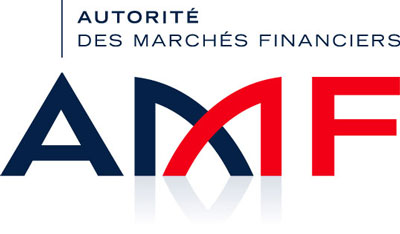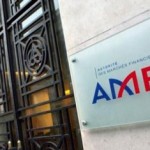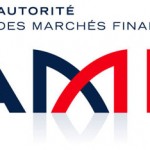How has the European equity market responded and performed in the wake of MiFID II?; AMF Chairman

Robert Ophèle, the Chairman of the Autorité des Marchés Financiers (AMF) that regulates participants and products in France’s financial markets, gave a speech during TradeTech Europe 2018 – 25 April 2018 about “How has the European equity market responded and performed in the wake of MiFID II?
Below is the speech as it was published by AMF:
“ Four months after the implementation of MiFID2, I am pleased to see there is still a dynamic and active European equity market. This I say only partly in jest since, in the context of MiFID2, certain markets – I have in mind certain commodities derivatives markets – have actually shifted away from Europe.
This is not the case of the European equity market. However, clearly, its structure has changed and is still evolving even if it is difficult, at this juncture, to precisely measure and understand these evolutions. Therefore, this afternoon I will share with you some very preliminary thoughts on the state of the European equity market in the wake of the introduction of MiFID2.
To start with, it is worth recalling that MiFID2 is a most structuring reform for European markets, extremely broad in scope and ambitious in its policy objective. Its aim – to enhance the efficiency and robustness of European financial markets – means: increasing market transparency, improving price discovery and favoring Lite pools over Dark pools and crossing networks.
While major changes were expected, a few months on, it already appears that some impacts may not have been fully anticipated. And it is interesting to take a look at some of the measures introduced or enhanced by this new piece of legislation and their effects on the functioning of the market, such as: the trading obligation, the Double volume cap or DVC mechanism, the tick size regime and the new transparency rules.
Let us try to draw some lessons from the first four months of implementation.
From the outset, to calculate a reliable DVC turned out to be more of a challenge than was initially foreseen. Finally the first release was only published on March 7, followed by a suspension of the waivers starting on the 12th.
You have probably noticed that we are still one month late in ESMA’s publication without covering the full scope of the financial instruments targeted by the DVC regulation and without publishing the warning indicators foreseen by MIFID2. However, the DVC mechanism is now running and the number of instruments suspended was surprisingly high: 744 equities were above the cap for the first calculation covering the full year 2017. While all the consequences of the DVC mechanism have yet to fully materialize, it can be noted that the structure of the market started to adapt to the new rule well before the first suspensions in order to implement the trading obligation and therefore enabling the detection of a number of trends.
Over the first four months of MiFID2’s implementation, the first lesson to be learnt is that lit pools’ market share remained stable. Until now, neither the trading obligation nor the DVC has had a positive impact on LIT venues.
MiFID2’s prohibition of Broker Crossing Networks has led to the emergence of various alternative trading mechanisms. Systematic internalisers, MTFs offering periodic auctions and venues (actually mostly MTFs) formalizing BCN-like pre-arranged negotiated trades appear to have attracted trades to the detriment of pure OTC and Dark pools.
To illustrate this, let’s take a look at the data available on French equities.
While in 2017 pure OTC trades usually accounted for 40% to 50 % of the volume traded on French equities, their volumes amounted to only 11 % in March 2018. Whereas for SIs, with only marginal volumes until 2018, their market share soared to 32 % over the same period: the overall OTC market share is broadly unchanged, but SIs are now carrying out the bulk of the volume.
Dark pools, never particularly popular on French equities, still accounted for 3.3 % of March’s volume while prearranged trades, which have been increasing since mid-2016, represented 7 % and periodic auctions, the new kid on the block of sorts, stood at only 0.4 %, but are growing steadily.
True lit pools accounted for 46 % of total volume; actually the same percentage as the 2017 average.
This should not come as a complete surprise; after all, MiFID2 has put SIs on an equal footing with multilateral trading venues in terms of trading obligation implementation and they enjoy a number of specific advantages. For example, they are not (yet) required to apply the tick size regime and most of the trades done by SIs actually correspond to a smaller tick size than the one imposed on LIT markets. While a change in the RTS 11 could extend the tick size of regulated markets to SIs for trades below the Standard Market Size, a broader application of the tick size regime would need a much welcome change in Level 1 regulation. This is nevertheless precisely what is suggested in the recent draft ECON report on the December proposal made by the Commission on prudential requirements of Investment firms.
That being said, since market-making is key to any well-functioning market and so as to better understand the processes at stake, a carefully coordinated review of SIs operations should be high on the regulators’ agenda.
At this juncture, although we can only be surprised by the huge differences in the average trade size between major SIs, we may have some difficulty in fully grasping the adoption of the SI model by HFT firms.
As supervisors, we will have to strictly enforce the basic principle that SIs should comply with and that is clearly stated in Recital 19 of Commission delegated Regulation 2017/565: “a systematic internaliser should not be allowed to bring together third party buying and selling interests in functionally the same way as a trading venue. A systematic internaliser should not consist of an internal matching system which executes client orders on a multilateral basis, an activity which requires authorisation as a multilateral trading facility (MTF). An internal matching system in this context is a system for matching client orders which results in the investment firm undertaking matched principal transactions on a regular and not occasional basis”. Since the recently updated ESMA Q&A n°22 has clarified the concrete implications of this principle, we expect SIs to comply with the answers as provided. We also expect that transactions carried out though SIs comply with the best execution requirement.
The surge in periodic auction activity is closely linked to the DVC implementation and is indeed clearly marketed as a response to the suspension of Dark trading. Let me quote the Press Release of the CBOE – currently the major player that uses this market technique – from March 13: Cboe Europe’s Periodic Auctions book set a new one-day record of €582.8 million traded on Monday, 12 March 2018. Mark Hemsley, President of Europe for Cboe, said: “With the double-volume caps now in effect, the Cboe Periodic Auctions book is well-poised for continued growth as market participants seek to trade in venues that provide minimal market impact.” … The Cboe Periodic Auctions book is a separate lit book that independently operates frequent randomised intra-day auctions throughout the day. Because of the nature of the periodic auction and attributes of the order book, information leakage is minimised and larger orders are prioritised in the auction process.
As mentioned by the CBOE in its press release, periodic auctions are considered as LIT trades, however it should be pointed out that levels of transparency is very limited. There is practically no pre-trade transparency and market participants are offered no means to understand the order book. Contribution to price discovery is near nil; auction duration is an unknown; and the European best bid and offer – the EBBO – provides a corridor where all trades are executed. All in all, one could be led to think that many of the trades done via periodic auctions, and that carry the ‘same member as a seller and a buyer’ flag, are actually pre-arranged trades. Quite obviously, this market model deserves further attention and analysis.
Coming to the tick size regime itself, while it would obviously be premature to draw final conclusions, our initial analysis is broadly positive. The analysis is based on a comparison of the market for more than 500 stocks traded on Euronext Paris from December 2017 to January 2018 and was released by the AMF in March [1].
Generally speaking, an increment that is too small leads to insignificant and incessant price improvements, resulting in an increase in noise in the order book and a deterioration of price formation mechanisms. Conversely, an overly high increment could lead to reduced liquidity. In order to avoid these dangers, ESMA has defined tick sizes according to the profile of each security (number of transactions per day) and their price.
Our initial analysis, which requires further work over a longer period of study, enabled us to observe the following first effects:
- For all the securities for which the tick size increased (74 % of our sample), the new regime led to:
- A larger number of securities available at best limit;
- A slight increase in the cost of small transactions on the most liquid securities but an unchanged cost for large transactions or those on small and mid-caps;
- An extended median lifespan for orders, which reflects increased stability of the order book;
- An increase in the average size of transactions;
- Less noise in the order book (a 44% drop in updates of best bid prices on the CAC 40).
For small and mid-caps, implementing an appropriate tick size regime – compared to the near constant tick size of 1 euro cent applied previously – resulted in a more dynamic order book and, above all, a significant increase in activity.
One could therefore conclude that, in the case of the French equity market, the new tick size regime has been properly calibrated and has produced positive effects.
Allow me to conclude with some thoughts on the transparency requirements. Four months after the go-live of MiFID2, we are far from having achieved a satisfactory outcome. While it is fair to recognize that MiFID2 is most demanding, it should also be recognized that, as things stand, one must strive to do better.
Regarding transaction reporting to national competent authorities, the quality of the reports has still to be improved. While on one hand we are close to solving a number of technical problems linked to the huge increase in data transmissions and on the other, we have achieved satisfactory coverage of the perimeter of transactions to be reported, it is time to enhance their quality. While the LEI issue has justified a transition period and appears to be in the process of being solved at least for EU entities, the flags required for certain trades are obviously missing in many cases and we should collectively focus on enhancing the quality of the reporting in that regard.
Regarding the post-trade disclosure by investment firms of their transactions, we have observed a significant increase in fees charged to access market data by many trading venues and APAs; at this juncture we are nevertheless not in a position to challenge them on the basis of the “reasonable commercial terms” principle. Furthermore, while the regulation is requesting that the information is made available, free of charge, 15 minutes after the APA has published it, one should recognize that this is not done as expected. The regulation requests that this dissemination should be efficient and consistent in order to ensure fast access to the information, on a non-discriminatory basis and in a format that facilitates the consolidation of the information with similar data from other sources. Information shall be published in a machine readable way meaning for example that it is published in an electronic format designed to be directly and automatically read by a computer and specified by free, non-proprietary and open standards; it should allow the publication to be accessed, read, used and copied by computer software that is free of charge and publicly available. Let me just say, and it is an understatement, that it is not currently the case.
MiFID2 is a most ambitious regulatory journey; it is also a long journey which deserves to be very closely monitored with industry. Going forward we will need to pursue our efforts to understand market developments, identify potential circumvention techniques and be prepared where appropriate to fine-tune the regulation. With that in mind, gathering relevant data is absolutely critical and we will work closely with infrastructures, investment firms and our fellow regulators to enhance the quality of the data we collect. Some of this fine-tuning should be done rapidly because it just involves quick fixes of technical errors. However others will require a more in-depth analysis of the impacts of MiFID2 on the effectiveness of our financial markets.
While it is clearly still early in the day to conclude, it is time to forge on! There is no doubt we will have further opportunities to discuss the full implications of MIFID2 on our markets. I look forward to your continuous engagement.
Source: AMF




























